A city of very ancient origins, a settlement founded by the Peon people in the Vardar Valley, in present-day North Macedonia, at an unspecified date in the Archaic Period (i.e., between the 7th and 6th centuries B.C.), and later the capital of the Roman province of Macedonia Salutaris, Stobi is today one of the most visited archaeological sites in the country, presenting itself to visitors in a good state of preservation. Lying on three hills, surrounded by walls, Stobi tells of a history that starts with the ancient Peon people and goes through Roman, Byzantine, and Slavic times: it is, in short, an example of a city in which different peoples left their traces.
As mentioned, we do not know when Stobi was founded, but we do know that, around 200 B.C., it was annexed to the kingdom of Macedonia by Philip V, who made it an important economic and strategic center, among the main ones in the area. This was mainly because of its favorable geographical position, at the center of the trade between Greece, the Aegean Sea and the plains washed by the Danube to the north, but also because of the fact that it was located on very fertile land, at the confluence of two rivers, a factor that contributed to the development of its agriculture. Stobi thus soon became one of the most important sites in Macedonia. Stobi is also mentioned by Livy, who mentions it while describing Philip V’s victory over the Dardanians.
After the Roman conquest of Macedonia, the city did not lose its importance but rather, especially in the Augustan period, experienced significant expansion: having become municipium and granted its citizens privileges derived from the Ius Italicum (a law that granted cities outside Italic soil the status that centers on the peninsula had), it saw its economic, commercial and strategic importance grow and, as mentioned, was elected capital of the province of Macedonia Salutaris. Many of the ruins that can be seen in Stobi today are actually from Roman times. In the last years of theRoman Empire, Stobi had become one of the main Christian cities in the area: even today it is possible to see the remains of some early Christian churches, with also several interesting mosaics. After the fall of the empire, in 479 Stobi was sacked by Theodoric’s Ostrogoths, and about forty years later it was devastated by an earthquake: it was not abandoned, but it had now lost its splendor. The city finally fell into ruin during the invasions of the Avars and Slavs a few decades later. It can be assumed that as early as the 6th century Stobi was no longer inhabited.
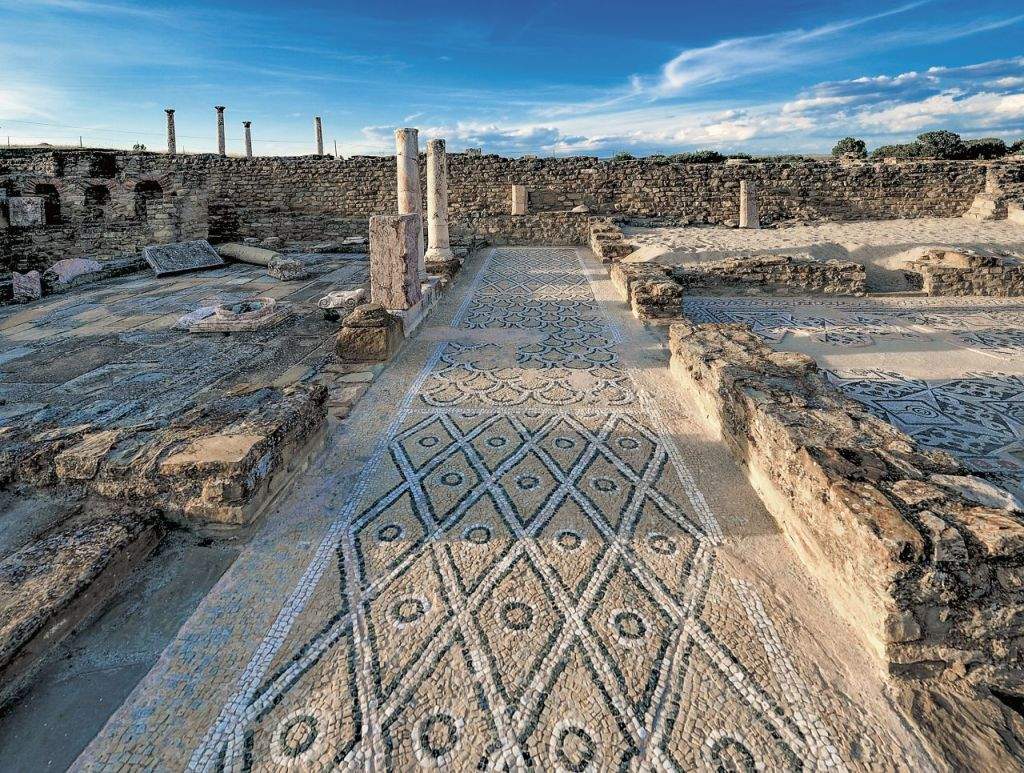 |
| The archaeological site of Stobi. Photo Discovering Macedonia |
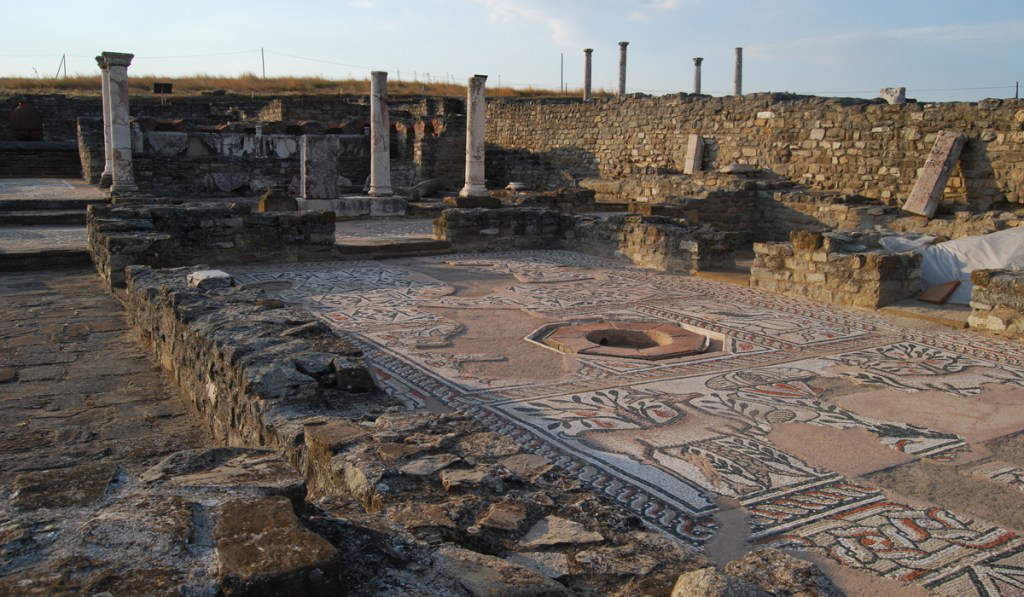 |
| The archaeological site of Stobi. Photo Discovering Macedonia |
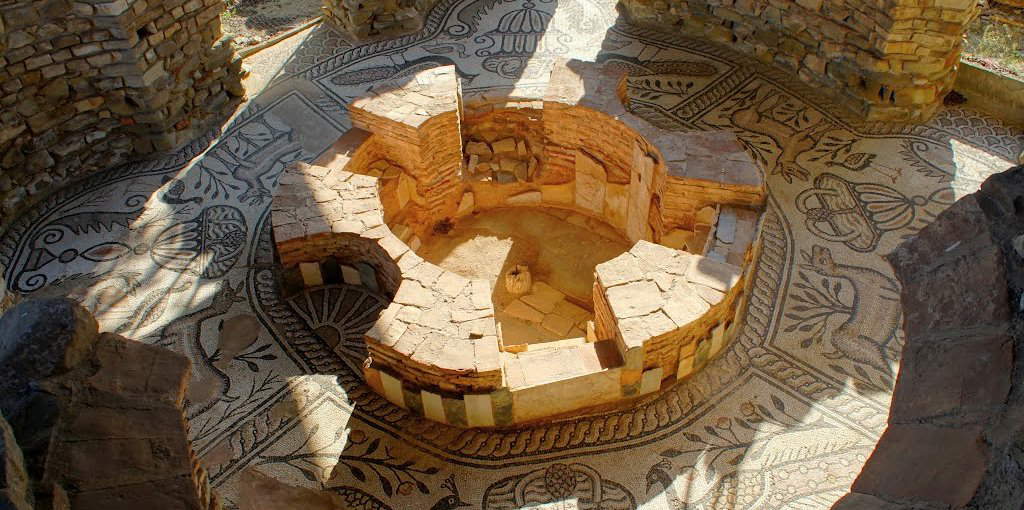 |
| The remains of the baptistery. Photo Discovering Macedonia |
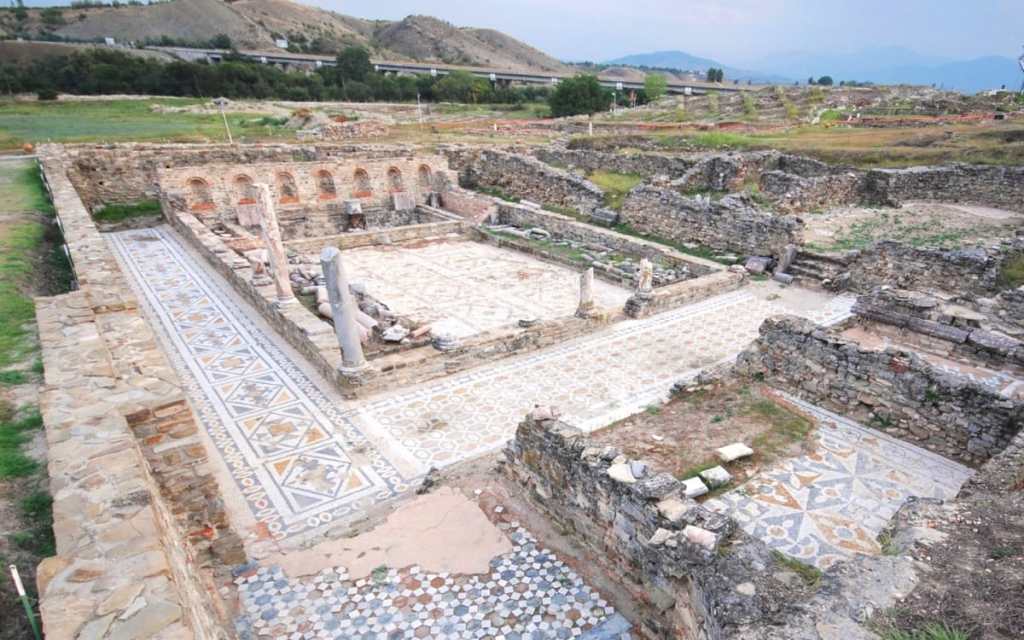 |
| The archaeological site of Stobi. Photo Discovering Macedonia |
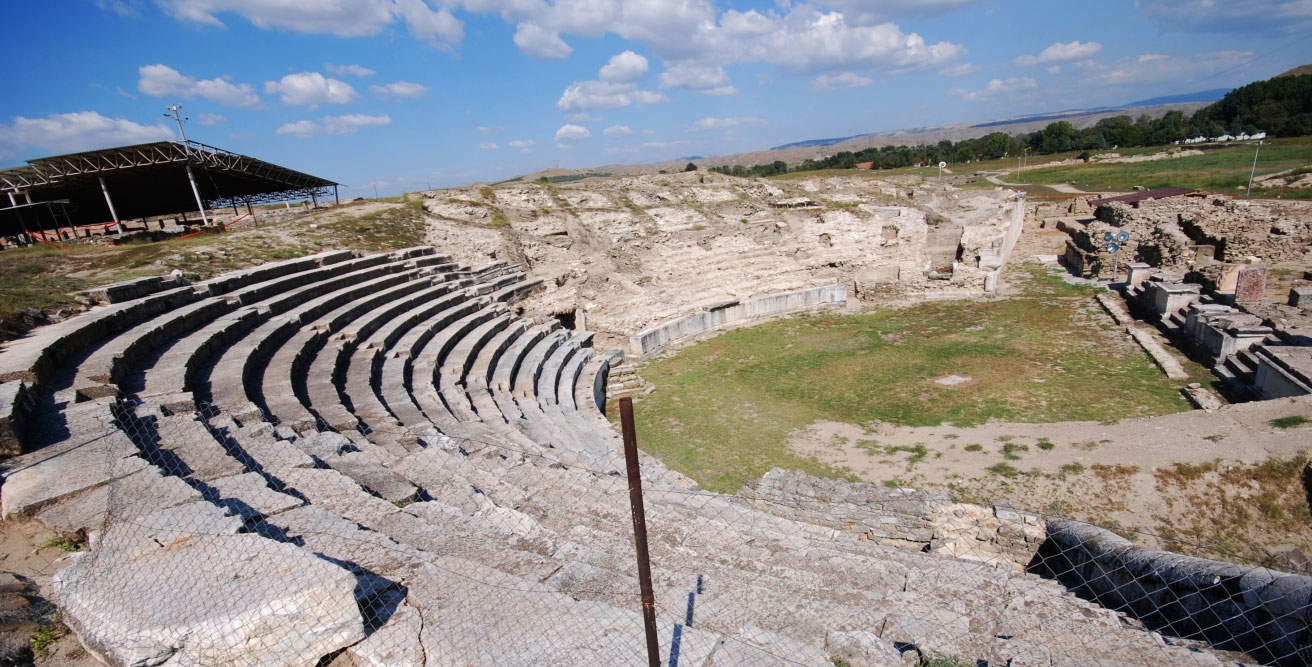 |
| The Roman theater of Stobi. Photo J. Miron |
There are many interesting buildings to visit in Stobi: the most conspicuous is certainly the excellently preserved Roman Theater, probably built in the 3rd century AD, and the first emergence of the ancient city to be discovered in excavation campaigns by Yugoslav archaeologists who investigated the site between 1924 and 1936. It could have held about 7,600 spectators, according to archaeologists’ calculations. Walking along the Via Principalis, or the main street of the ancient city, one encounters some of the most important structures: the civil basilica, where the administrative and commercial life of the city took place, the Thermae Magnae and Thermae Minores, the facilities reserved for thermal baths, and then again the “House of Psalms,” a mansion decorated with a sumptuous mosaic. Along the way, one can also see the remains of the 4th-century Episcopal basilica (it was commissioned by Bishop Budius, who attended the Council of Nicaea in 325), along with those of the Baptistery, which preserves marvelous early Christian mosaics with figures of peacocks, a typical motif of early Christian art. Still, the city also contains the so-called Palace of Theodosius, where Emperor Theodosius is believed to have stayed while visiting the city, the Domus Fulonica (a complex of houses and stores), and the Via Sacra, a paved street lined with columns that led to the Christian basilica.
The city today is managed by theNational Institute of Stobi, a state agency that is responsible for the preservation and enhancement of the archaeological site, and through its website also offers constant updates and even virtual tours to discover the ancient city. The institute was founded in 2008 and, thanks in part to funds secured from Macedonia’s national government, was able to restart excavation activities that had long been halted (conservation and restoration activities had continued, however). New projects will be started soon: the institute also intends to build a museum that can accompany the narrative of the site and can offer facilities to visitors (such as a cafeteria and a gift store). Stobi is located about 80 km from the capital Skopje, and for those visiting Macedonia it is a must-see.
 |
| Stobi, the ancient capital of Macedonia Salutaris, an important Macedonian archaeological site |
Warning: the translation into English of the original Italian article was created using automatic tools. We undertake to review all articles, but we do not guarantee the total absence of inaccuracies in the translation due to the program. You can find the original by clicking on the ITA button. If you find any mistake,please contact us.